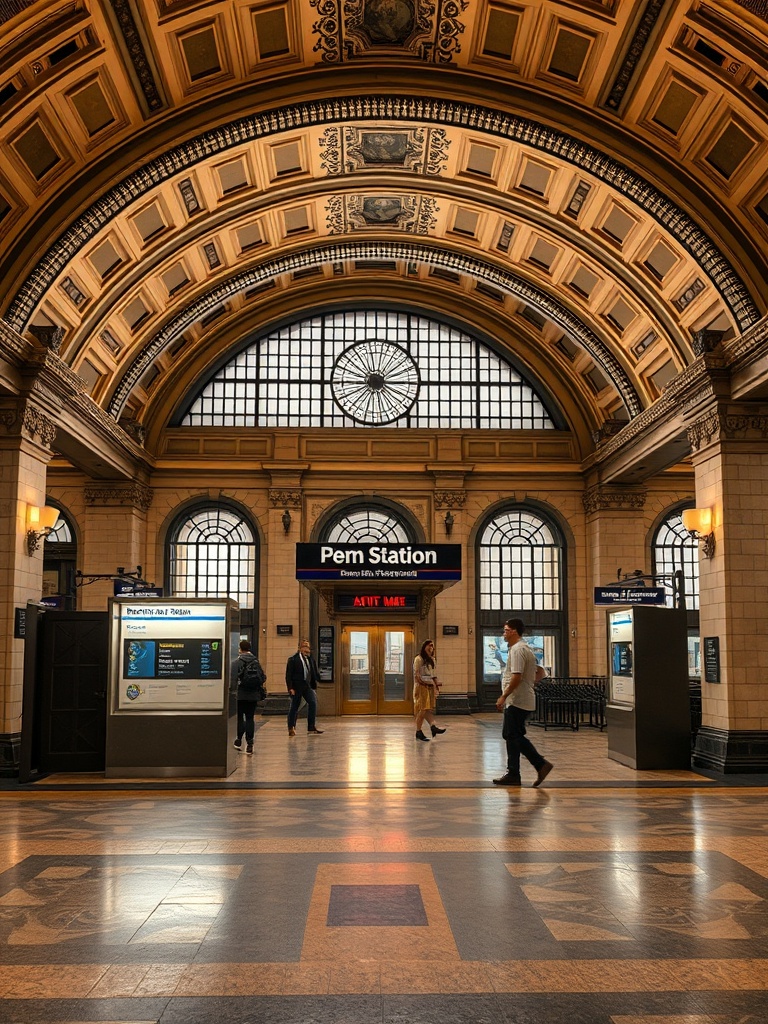Penn Station: The Transit Hub That Keeps Evolving
Pennsylvania Station remains one of the busiest transit hubs in the country, serving commuters, regional travelers, and long-distance passengers who rely on Amtrak, NJ Transit, and the Long Island Rail Road. Despite a reputation for being crowded and confusing, the station and its surrounding district are undergoing steady changes aimed at improving capacity, convenience, and passenger experience.
What’s changing and why it matters
The core challenge at Penn Station is capacity.

Track and platform limits, aging tunnels beneath the Hudson River, and heavy intermodal demand all create pinch points that affect reliability. Addressing those constraints is a top priority for transit agencies because more reliable service reduces delays, improves commuter quality of life, and unlocks economic benefits for the region.
Major efforts focus on expanding passenger space, modernizing infrastructure, and improving connections. Nearby upgraded concourses have already shifted some traffic patterns, offering clearer wayfinding and more comfortable waiting areas.
Long-term plans prioritize additional tunnels and platform capacity to handle growing ridership and to increase redundancy for service disruptions.
Passenger experience: what’s better now
Retail and amenities around the station have grown more diverse, with better dining, coffee shops, and convenience options that cater to commuters on the move. Enhanced signage and digital displays make navigating the complex interchange between trains, subways, and regional buses easier. Security and customer service presence has also increased, creating a safer, more guided environment for travelers.
Accessibility improvements are another important focus. Elevators, ramps, tactile guidance strips, and clearer boarding information are gradually expanding across platforms and concourses, making the station more usable for people with mobility challenges.
Agencies are also emphasizing quieter, cleaner waiting areas and better restroom facilities to make the daily commute less stressful.
Tips for passengers
– Allow extra time during peak hours. Even small delays can cascade through a busy hub.
– Use official transit apps and station departure boards for real-time updates. They’re the fastest way to know about platform changes or service advisories.
– If you’re transferring between carriers, plan your route ahead—some transfers require navigating long corridors or stairways.
– Consider off-peak travel when possible; mid-day and late-evening trains are typically less crowded and easier to navigate.
– Take advantage of alternative entry points and nearby facilities that can ease congestion, such as upgraded concourses or adjacent entrances.
Neighborhood and redevelopment
The area surrounding Penn Station is one of the most active redevelopment zones in the city. New office, residential, and mixed-use projects aim to create a more integrated district where transit, retail, and public spaces coexist. Thoughtful urban design is being encouraged to improve pedestrian flow, add green space, and create safer streets around the station. This can transform the commuter experience from a frenetic transfer into a more pleasant part of the urban day.
Why it remains essential
A functional Penn Station is vital to the regional economy. It’s not just a place people pass through; it’s a lifeline for workers, students, and travelers who depend on efficient, frequent rail service.
Investment in capacity and passenger experience pays off through fewer delays, better connectivity, and stronger growth for the broader metropolitan area.
For anyone who uses the station, staying informed and adapting travel habits can make daily trips smoother. As improvements roll out and plans progress, Penn Station should become easier to navigate and more resilient—helping the region move more efficiently and comfortably.